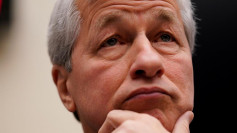Gold prices took a significant hit on Friday, falling over 2% as stronger-than-expected U.S. job growth dimmed prospects for interest rate cuts this year. This decline was further exacerbated by news that China, a major gold consumer, paused its bullion purchases in May. The dual impact of these developments led to a bearish sentiment in the gold market, affecting prices and investor confidence.
The Labor Department's report revealed a substantial rise in Nonfarm Payrolls (NFP), with 272,000 jobs added in May, far exceeding the anticipated 185,000. Additionally, average hourly earnings increased by 0.4% on a monthly basis, above the forecasted 0.3%, signaling ongoing inflationary pressures. The unemployment rate, however, edged up to 4%, slightly above the expected 3.9%.
"Today's data undermines the message that other recent economic data have been giving of a cooling U.S. economy and slams the door shut on a July rate cut," said Seema Shah, chief global strategist at Principal Asset Management. "Not only has job growth exploded again, but wage growth has also surprised to the upside - both moving in the opposite direction to what the Fed needs to begin easing policy."
Spot gold dropped 2.5% to $2,315.36 per ounce, while U.S. gold futures declined 2.4% to $2,333.30. The robust employment report diminished expectations for a near-term rate cut, affecting the attractiveness of non-yielding assets like gold. Traders reduced their bets, now pricing in a smaller reduction of 38 basis points (bps) by the end of December, down from 48 bps before the release of the NFP data, with the first cut now anticipated in November instead of September.
Adding to the bearish sentiment was the revelation that China's central bank, the People's Bank of China (PBOC), paused its gold purchases in May after 18 consecutive months of buying. This pause contributed to the significant selling pressure on gold, as China has been the largest official sector buyer of gold in 2023. The PBOC maintained its gold reserves at 72.80 million troy ounces, with the value of these reserves slightly increasing to $170.96 billion from $167.96 billion in April.
Ole Hansen, head of commodity strategy at Saxo Bank, commented on the market reaction: "While China is unlikely to halt gold purchases permanently, the pause indicates a reluctance to buy at record prices. Despite the current consolidation, the long-term bullish outlook for gold remains unchanged."
The news from China and the strong U.S. jobs report created a perfect storm for gold prices. Traders and investors, anticipating a dovish shift from the Federal Reserve, were caught off guard. "We will find out today whether gold has the stomach to absorb the one-two punch of a strong employment report AND a pause in Chinese buying," noted Tai Wong, a New York-based independent metals trader. "Gold is trading at recent lows with the significant technical support at $2,275 potentially in play."
The broader market also saw declines in other precious metals. Spot silver fell 5% to $29.74 per ounce, platinum was down 2% at $982.30, and palladium lost 1.5% to $915.85.
Looking ahead, the focus shifts to upcoming U.S. economic data, particularly the Non-Farm Payrolls report. A weaker-than-expected jobs report could rekindle demand for gold as a safe haven, especially if it strengthens the case for a dovish Federal Reserve stance. Lower interest rates reduce the opportunity cost of holding non-yielding assets like gold, potentially providing a boost to prices.





